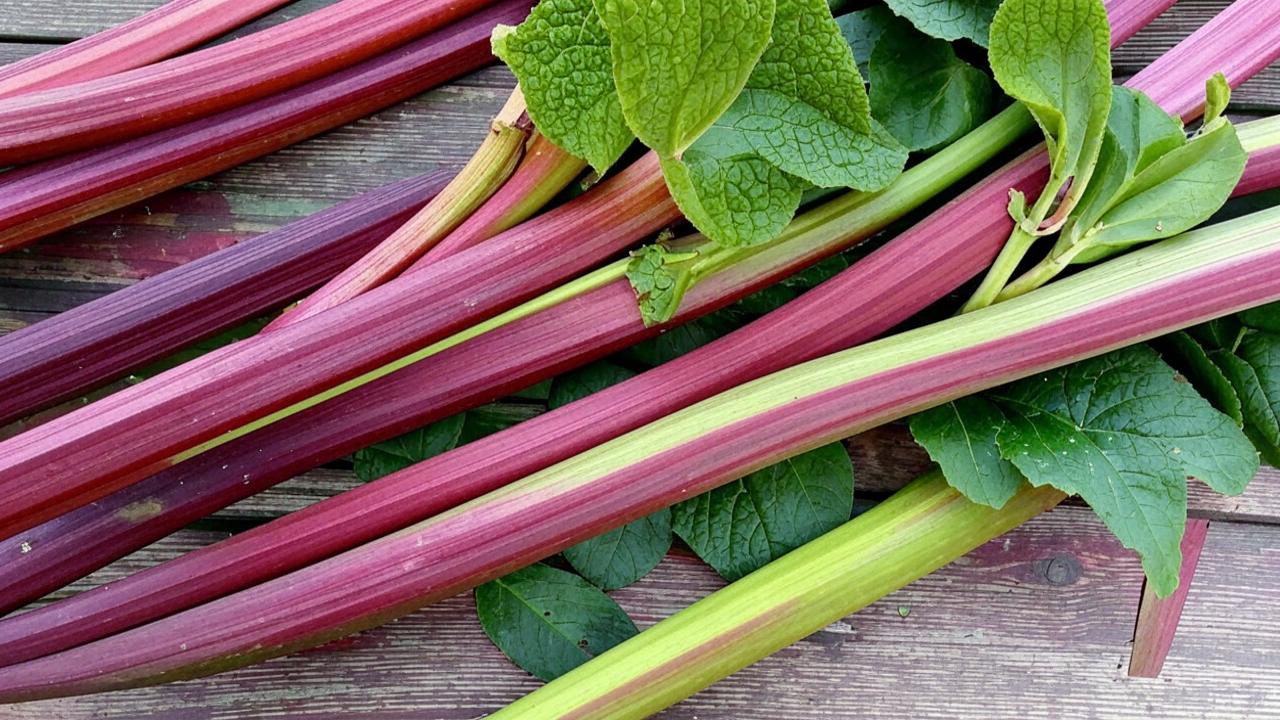
Nutriciologist, academic director of MIIN
“Rhubarb is a vegetable crop known worldwide. It is a perennial herbaceous plant with fleshy stems and a thick rhizome. Its color varies from red to pale green. In 15th century Europe, the root of the plant cost 10 times as much as cinnamon and four times as much as saffron. Now the succulent stems of the plant are widely used in cooking, and the rhizome – in medicine.”
Benefits of rhubarb
Rhubarb contains vitamins and trace elements: calcium, potassium, manganese, magnesium, iron, phosphorus, selenium. They are necessary for the normal vital activity of the human body. In 100 g of the product contains about 25% of the daily norm of vitamin K, which strengthens teeth and bones.
The vegetable also contains unique natural chemical compounds that have a pronounced antioxidant effect – bind free radicals and slow down the aging process. The stems of the plant contain anthocyanins (red pigment) and proanthocyanidins – one of the most effective natural antioxidants.

The favorable effect of rhubarb on the digestive system is due to the presence of organic acids, pectin substances and anthraquinones – emodin, chrysophanol and rhein.
- Rhubarb increases appetite and improves digestion due to the content of malic, oxalic, citric and succinic acids.
- Pectin helps prevent constipation, removes toxic substances from the body and improves detoxification processes.
- Rhubarb has a pronounced laxative effect. Anthraquinones increase peristalsis of the large intestine and retain water, act as a laxative 6-10 hours after ingestion.
- Rhubarb supports liver health and stimulates bile flow due to its anthraquinones content.
- A study has shown that rhubarb extract can inhibit the growth of Helicobacter pylori bacteria, which increases the risk of ulcers and gastritis.
Interestingly, rhubarb root has potential antiviral activity against coronaviruses, particularly SARS-CoV-2, due to its emodin (anthraquinone) content.
The stems, leaves and rhizome of the plant are used in cosmetology. Rhubarb-based remedies reduce the appearance of age spots, even out skin tone due to the content of organic acids – malic, oxalic, citric, amber. It is believed that lightening rhubarb decoction in combination with chamomile or lemon can give your hair a lighter shade.
Contraindications
Despite the benefits of the plant, the use of rhubarb also has negative health consequences.
- The leaves of the plant are inedible, as they contain a large amount of oxalic acid. The stems of the plant contain less oxalic acid and can be eaten.
- Excessive consumption of rhubarb can lead to the accumulation of oxalate crystals in the organs, which contributes to the formation of kidney stones and increases the risk of kidney failure.

Rhubarb should be consumed with caution:
- with a tendency to diarrhea – rhubarb has a laxative effect due to the content of pectin substances and anthraquinones;
- in case of urolithiasis and tendency to formation of oxalate stones – rhubarb contains oxalic acid and belongs to products with high oxalate density;
- in case of gallstone disease – anthraquinones in rhubarb may stimulate the outflow of bile.
It is not recommended to use rhubarb in raw form in chronic diseases of the gastrointestinal tract (GIT) in the period of exacerbation, as the plant contains organic acids that irritate the gastric mucosa.
However, when properly consumed, rhubarb is a component of a complete diet and has positive effects. Rhubarb is mainly subjected to heat treatment. It can be baked, boiled, stewed. In raw form, rhubarb can be consumed, having first peeled the stems from the tough skin. Prepare a crunchy salad, spicy sauce or add rhubarb to smoothies.
What to make with rhubarb?
Rhubarb salad with cucumbers
Ingredients:
- rhubarb (stems) – 300 g;
- cucumbers (medium) – 4 pcs;
- grainy mustard – 1 tsp;
- honey – 2 tsp;
- juice of 1/2 lemon;
- zest of 1/2 lemon;
- olive oil – 3 tbsp;
- salt, pepper – to taste.

Preparation:
- Peel rhubarb stalks from tough fibers and cut across into thin slices. Cut the cucumbers into thin slices.
- Mix the lemon zest and juice with the honey, mustard and olive oil. Season with salt and pepper.
- Mix the cucumbers and rhubarb with the dressing, let stand for 10 minutes. The salad is ready to serve.
Rhubarb chutney with honey and ginger
Ingredients:
- rhubarb (stems) – 250 g;
- onion – 1/2 head;
- garlic – 1 clove;
- jalapeño pepper – 2 pcs;
- light raisins – 50 g;
- honey – 3 tbsp;
- cider vinegar – 1 tbsp;
- water – 1/4 cup;
- pinch of ground ginger.

Preparation:
- Peel rhubarb stalks from tough fibers and cut across into two cm pieces.
- Finely chop the onions and jalapeño peppers, removing the seeds. Chop the garlic.
- Combine rhubarb, onion, garlic, jalapeño pepper, raisins, honey, vinegar, ground ginger and water in a saucepan. Bring to a boil over medium heat, reduce heat and cover.
- Cook for 15 minutes, then open the lid and cook for another three to five minutes until thickened.
Rhubarb Smoothie
Ingredients:
- rhubarb (stems) – 3 pcs;
- banana – 1 pc;
- water (boiled) – 150 ml.
Method of preparation:
- Clean rhubarb stalks from tough fibers and cut across into small pieces. Peel banana and cut into circles.
- Put the banana, rhubarb in a glass blender, pour water and chop until smooth. Smoothie is ready.
In cosmetology, hair lightening with rhubarb and whitening face masks are popular, which can be prepared at home.
Infusion for hair from rhubarb
Ingredients:
- Rhubarb rhizome – 1 tbsp;
- field chamomile – 1 tbsp;
- water – 1 liter.
Preparation:
- Rhubarb rhizome mixed with field chamomile in a ratio of 1:1.
- Pour the mixture one liter of boiling water and let infuse for 30 minutes.
- After washing the head rinse the hair with the infusion and wrap the head in a towel for 20-30 minutes. Do not rinse.

For the preparation of infusion can be used as fresh and dry raw materials.
Mask for face from rhubarb
Mix rhubarb stalks and leaves with 1 tbsp. kefir, apply to the skin and keep for 10 minutes. Then wash off the mask with warm water.
On this day you should avoid direct sunlight on the face.
In medicine use medicinal products based on rhubarb root more often as a choleretic and a mild laxative for chronic constipation.
Rhubarb can be a component of a complete diet and have positive effects with moderate consumption. Adults are recommended to consume no more than 100-150 g of rhubarb per day, no more than two to three times a week. Do not forget to take into account the peculiarities of health and possible contraindications.





